I’ve owned an electric car since mid-December and haven’t used public charging once. The full spaces at the nearest Electrify America station and/or the broken screens at the nearest Electrify America station have been of utterly no consequence to my family’s daily use of our 2023 Kia Niro EV. This is a point that just doesn’t get made enough in the conversation about EVs: Most of their charging happens at home. Specifically, about 80% of it, according to the U.S. Department of Energy.
Putting aside that it’s cheaper to charge at home (versus a gas station and public charger), the convenience of doing so is one of the most appealing parts of EV ownership. Instead of going to a gas station every so often, something exactly 0% of the population likes to do, you just plug the car in every night or, as we do, once every couple of days when the charge gets low-ish. Do I miss my visits to the nearest 76 station? Can’t say I do, especially since I’ve moved from Oregon and no longer get to sit nice and comfy in my car while a law-mandated 76 employee fills my tank.
Early on, charging at home was admittedly a tad janky. First, I had to buy a universal 120-volt charge cord off Amazon since Kia does not provide one with their electrified vehicles. More on that in a moment. Next, I had to duct tape that charger to the garage rafters because the only electrical outlet close enough to reach the Niro was the one used by the garage door opener. My Z3 didn’t seem to mind. Charging with this basic cord and home electrical outlet required keeping the Niro plugged in every night or at least every other night, but I can’t say that impacted my life. That said, a quick turn-around after a longer drive would’ve been an issue and almost certainly would’ve sent me to that EA station.
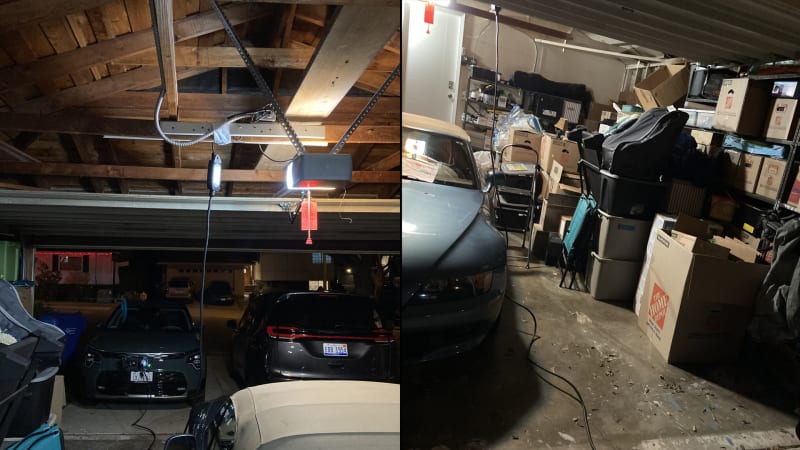
Inevitably, I would’ve at least installed a 240-volt outlet closer to the front of my garage to greatly decrease charge times (and jankiness), but was instead given the opportunity to test a new Wallbox Pulsar Plus home charging unit. Admittedly, unlike testing a Yakima roof box or electric bicycle that go back to the manufacturer after a few weeks, a home charger is a rather permanent thing. There are electricians, permits and inspectors involved, and you know, bolting something to my garage wall and wiring it into my home’s electrical panel. I’ll be telling more of that story at a later date, but suffice it to say, I’m getting to experience for free something that would normally be much pricier than a simple 240-volt outlet installation. The Pulsar Plus 48A retails for $699 and installation and permits were $1,645. Yeah, not cheap.
So why bother with the fancy charger when my father-in-law had his electrician install a 240-volt outlet in his garage for $75? The home charger is much quicker, and this particular one allows you to alter the amount of amperage flowing into your car (good for avoiding peak electricity rates or overtaxing your house’s electrical box), monitor charging with an app, schedule charge times, keep track of how much you’re paying for electricity, and potentially future-proofing yourself for later EVs that’ll be able to charge even quicker than those today. Already I’ve turned up and down amperage based on various test cars’ charging capability (the Niro can max it out at 40 amps). It also has an extra-long 25-foot-long charge cord that’s been huge for plugging in various press cars with different charge point locations.
Mostly, though, we just plug the Niro in and forget about it. The 120-volt Amazon charge cord hasn’t left the Niro’s frunk since we had the Pulsar Plus installed, somewhat vindicating Kia’s decision to not include one, and again, we have yet to use a public charging station. Same goes for those various electric press cars that I test for a week at a time.
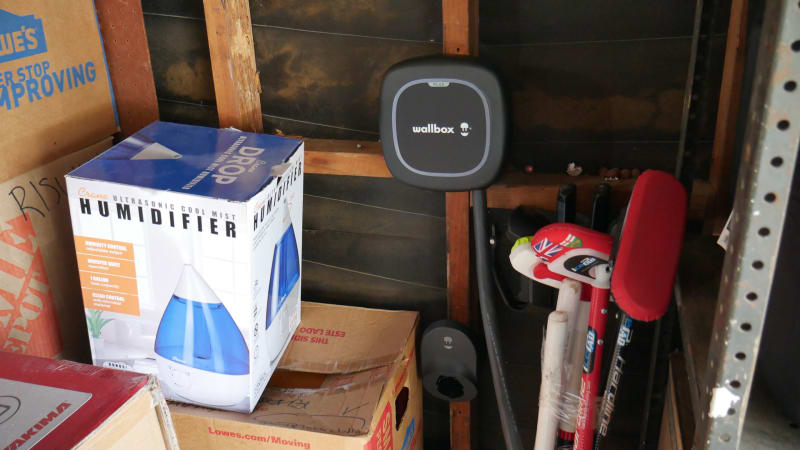
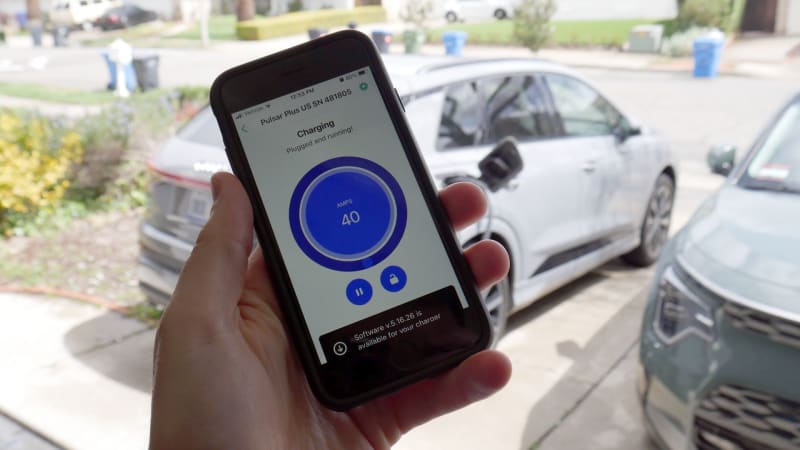
Now, there is another, albeit lesser part of not needing to use one of those notoriously unreliable public fast charging stations: The few longer trips we’ve made have been covered by a car powered, at least in part, by gasoline. Dun dun dun. Personally, I don’t see this as a problem or hypocritical. Our electric car has taken over the vast majority of routine trips, meaning a lot of gas has not been burned and CO2 sent into the atmosphere. Isn’t that the point? Don’t let perfection be the enemy of progress. Removing one gas burner from a two-car household amounts to quite a bit of progress, especially when you limit the remaining gas burner’s mileage (which wouldn’t be such a bad thing for its maintenance and longevity).
Here in suburban Los Angeles County, it’s certainly not uncommon to see double Tesla driveways, but our two-car household combination of EV and gas burner is anecdotally far more prevalent. Heck, just looking out my window as I type this, one neighbor has a Tesla Model 3 and a Jeep Cherokee, another a Model 3 and a Ford Explorer, while yet another (the coolest neighbors) have a Mustang Mach-E and a Bronco Badlands. And they say Californians don’t buy American cars. I definitely see the EVs leaving more often, and if anything, I’d wager using them as the primary car eases the eco guilt and financial impact of choosing their cool, not-at-all-efficient second car.
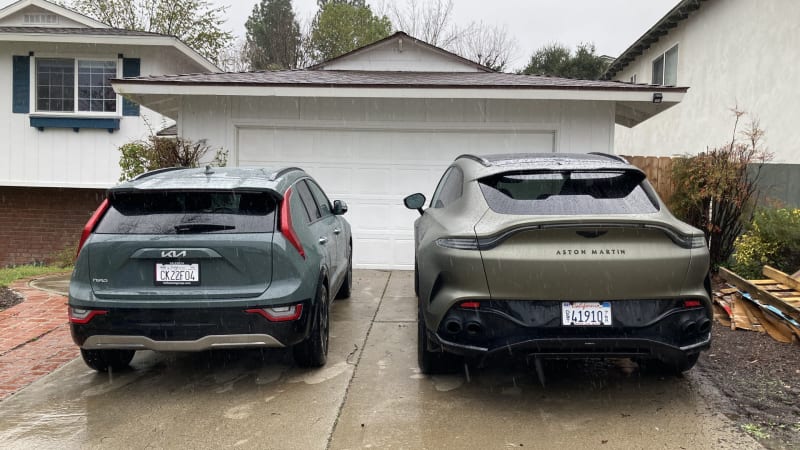
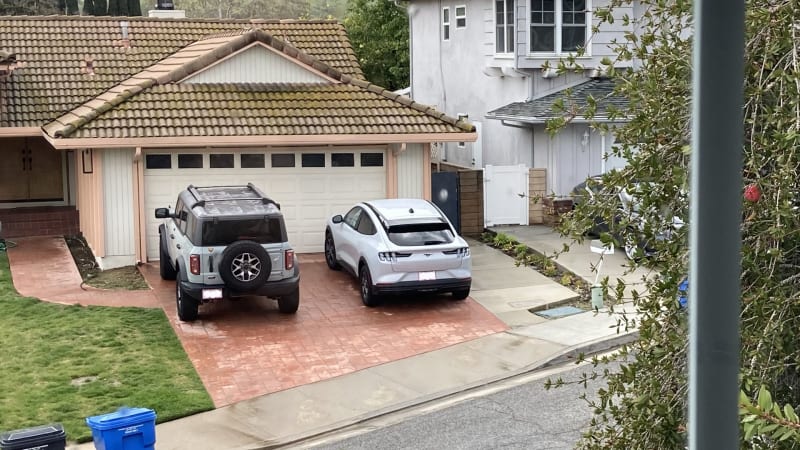
Not every gas-burning second car has been as cool as an Aston Martin DBX707; neighbors get close with Bronco Badlands.
Ultimately, I don’t think the biggest problem facing electric vehicle charging is the insufficient and unreliable public fast charging network. Now, that’s definitely a problem that must be addressed by the private charging companies (seriously Electrify America, get your act together) and, to a lesser extent I’d argue, various government entities. Instead, it’s the rarity of “home” charging in apartment and condominium buildings. Whether we’re talking smaller buildings like those dotting Los Angeles or bigger towers with multi-story parking garages, installing chargers is a complex and expensive challenge.
It is not an impossible one, though. As just one example, Wallbox is in fact a Spanish company that does the lion's share of its business in multi-family locations, including high-density buildings. Rather than outfitting every parking spot with a charger, buildings install a certain number of common chargers controlled with a management platform dubbed My Wallbox that allows for multiple users to pay for and keep track of charging. Every building would assuredly be different, but each would have to deal with the very real problem of what to do with fully charged cars squatting indefinitely at charger spaces. I struggle to come up with a more viable solution than “hire Larry the Valet,” which would be good for national employment but not so good for your condo dues.
This is where government infrastructure money can really make a difference. Not paying Larry the Valet, but grants to outfit multi-family dwellings such as apartments and condominiums with charging units. Tesla, Electrify America, EVGo and other private companies show that the market is taking care of fast charging to at least some extent, but apartment building owners and condo boards obviously don’t have access to that level of capital.
So let’s continue to hold Electrify America’s feet to the fire for being unreliable, but let’s not dwell too much on the current inefficiencies of public fast charging. It’s bound to improve, especially in terms of volume. Just think how much Tesla accomplished in a decade building Superchargers. Let’s instead remember that most charging happens at home, doing so is a great thing, and that the definition of “home” can’t just be single-family houses with white-picket fences. Or in my case, shitty landscaping.
"electric" - Google News
March 22, 2023 at 09:00PM
https://ift.tt/rLYevka
I've owned an electric car for four months and not used a public charger once - Autoblog
"electric" - Google News
https://ift.tt/ZXaNm8v
https://ift.tt/u2Orswo
No comments:
Post a Comment